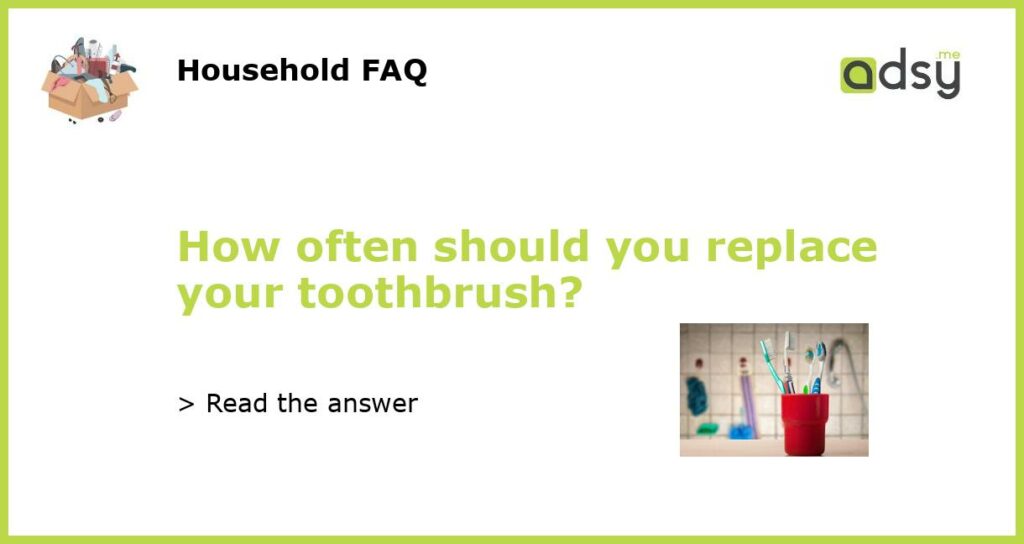Why should you replace your toothbrush regularly?
Your toothbrush is an essential tool for maintaining good oral hygiene. It helps remove plaque, bacteria, and food particles from your teeth and gums. However, over time, the bristles of your toothbrush can become worn out, frayed, and less effective at cleaning your teeth. Additionally, bacteria can accumulate on the brush, potentially causing oral health issues.
For these reasons, it is important to replace your toothbrush regularly to ensure optimal oral health. But how often should you replace your toothbrush?
How often should you replace your toothbrush?
The American Dental Association (ADA) recommends replacing your toothbrush every three to four months, or sooner if you notice signs of wear. This timeline ensures that your toothbrush remains effective in removing plaque and bacteria from your teeth.
However, there are certain situations where you may need to replace your toothbrush more frequently.
When should you replace your toothbrush sooner?
There are a few instances where replacing your toothbrush sooner than three to four months is recommended:
1. Illness: If you’ve been sick, particularly with a contagious illness like the flu or strep throat, it’s a good idea to replace your toothbrush to avoid reinfection. Bacteria and viruses can linger on the bristles of your toothbrush, and using the same brush can increase the risk of re-exposure.
2. Frayed or worn-out bristles: When the bristles on your toothbrush start to fray or become splayed, they are less effective at removing plaque and debris. If you notice significant wear on your toothbrush bristles before the three to four-month mark, it’s time for a replacement.
3. After a mouth injury or dental procedure: If you’ve had a mouth injury or dental procedure, such as oral surgery or a tooth extraction, it’s important to replace your toothbrush afterward. Bacteria can collect on the brush during the healing process, increasing the risk of infection.
4. Sharing: It is not recommended to share toothbrushes with others. Sharing toothbrushes can increase the likelihood of cross-contamination and the spread of oral bacteria and viruses. If you’ve accidentally shared your toothbrush or used someone else’s, it’s advisable to replace it as soon as possible.
Tips for maintaining a clean toothbrush
Proper care and maintenance of your toothbrush can help extend its lifespan and ensure it remains clean and effective:
1. Rinse after use: After brushing your teeth, rinse your toothbrush thoroughly with tap water to remove any remaining toothpaste or debris.
2. Store upright and in the open: Storing your toothbrush upright in a well-ventilated area will allow it to dry more effectively between uses. Avoid covering or storing it in closed containers, as this can promote bacterial growth.
3. Avoid sharing: As mentioned earlier, it is not advisable to share toothbrushes. Each person in your household should have their own toothbrush.
4. Consider using a toothbrush sanitizer: Toothbrush sanitizers can help eliminate bacteria and other microorganisms that may be present on your toothbrush. There are various types of sanitizers available, including UV sanitizers and rinse-based sanitizers.
In conclusion
Regularly replacing your toothbrush is essential for maintaining good oral hygiene. The ADA recommends replacing your toothbrush every three to four months or sooner if you notice signs of wear or have been sick or injured. Taking proper care of your toothbrush can also help extend its lifespan and keep it clean and effective. By following these recommendations, you can ensure that your toothbrush continues to help keep your teeth and gums healthy.






